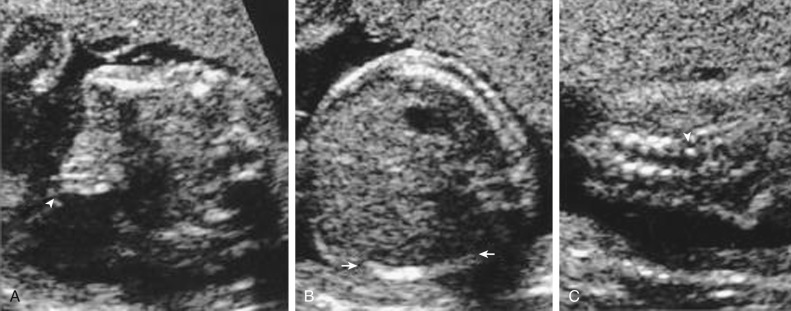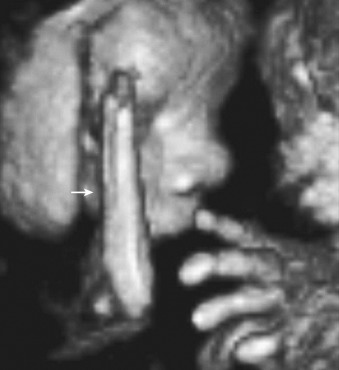Abstract
Poland sequence refers to a congenital unilateral absence of the sternal costal portion of the pectoralis major muscle and ipsilateral upper limb anomalies. The incidence of Poland sequence is 1 : 30,000 to 1 : 90,000. A genetic etiology for Poland sequence has not been identified. The diagnosis can be suspected on prenatal ultrasound but must be confirmed on postnatal examination. Postnatal management consists of surgical correction and rehabilitation therapy for musculoskeletal defects.
Keywords
Poland sequence, pectoralis major muscle, upper limb anomalies, musculoskeletal defects, vascular disruptive sequence
Introduction
Poland sequence refers to congenital unilateral absence of the sternal costal portion of the pectoralis major muscle and ipsilateral upper limb anomalies. There is no known genetic etiology for Poland sequence. The pathogenesis of this disorder is suggested to be caused by a vascular disruptive sequence. Postpartum management usually consists of surgical correction and rehabilitation therapy for musculoskeletal defects.
Disease
Definition
There are no formal diagnostic criteria for Poland sequence. The diagnosis is based on clinical findings of unilateral absence or hypoplasia of the pectoralis muscle with ipsilateral upper limb anomalies.
Prevalence and Epidemiology
The incidence of Poland sequence is 1 : 30,000 to 1 : 90,000. The disorder is two to three times more common in males than in females.
Etiology and Pathophysiology
The anomalies seen in Poland sequence are suspected to be caused by a vascular disruptive sequence. Early embryonic disruption of blood supply to the subclavian artery, distal to the origin of the vertebral artery and proximal to the internal thoracic artery, are thought to lead to absence of the pectoralis major muscle and terminal transverse limb defects.
There is no known genetic etiology for this disorder. The disorder is generally thought to be sporadic, but familial cases have been described suggesting a possibility of an autosomal dominant inheritance pattern. Without a family history of Poland sequence, the recurrence risk has been suggested to be considerably less than 1%.
Manifestations of Disease
Clinical Presentation
Poland sequence manifests with unilateral absence or hypoplasia of the pectoralis muscle with ipsilateral upper limb anomalies ( Fig. 138.1 ). The right side of the body is affected in 75% of cases. The upper limb anomalies consist of varying degrees of syndactyly, brachydactyly, and oligodactyly. Occasionally, more significant reduction deficiencies of the long bones of the arm can be present. Other abnormalities that have been seen in Poland sequence are dextrocardia; absence of the pectoralis minor muscle; hypoplasia of the ipsilateral nipple, areola, and breast; hemivertebrae; Sprengel deformity (upward displacement of the scapula); and renal abnormalities. Poland sequence has also been associated with oculo-auriculo-vertebral spectrum and Möbius syndrome.

Imaging Technique and Findings
Ultrasound.
There is one reported case of a prenatal ultrasound (US) diagnosis of Poland sequence in the literature. US findings were left-sided hypomelia, specifically the clavicle, humerus, ulna, and metacarpals, with absence of the radius. Asymmetry of the rib cage was also noted. The patient elected for termination of pregnancy, and fetal autopsy confirmed the diagnosis.
When prenatal US findings reveal unilateral limb abnormalities and chest asymmetry, a diagnosis of Poland sequence should be considered. Given the suspected pathogenesis of Poland sequence as a vascular disruption, an attempt should be made to assess the ipsilateral subclavian artery with Doppler interrogation. Three-dimensional US should also be used to aid in the characterization of the limb anomaly ( Figs. 138.2 and 138.3 ).


Stay updated, free articles. Join our Telegram channel

Full access? Get Clinical Tree








